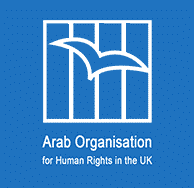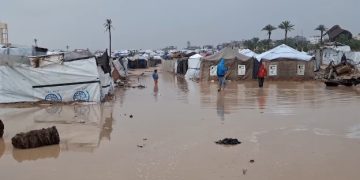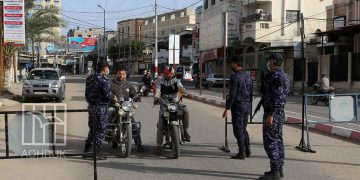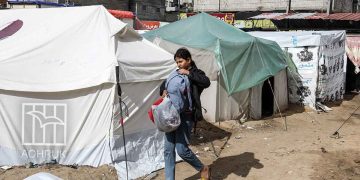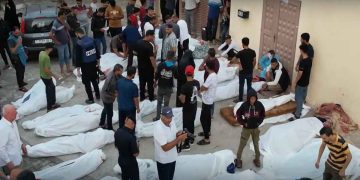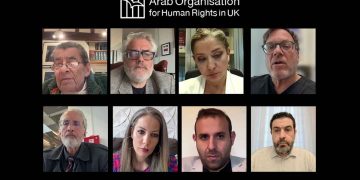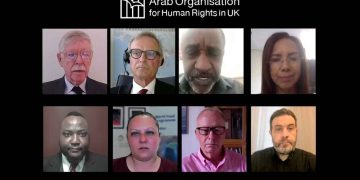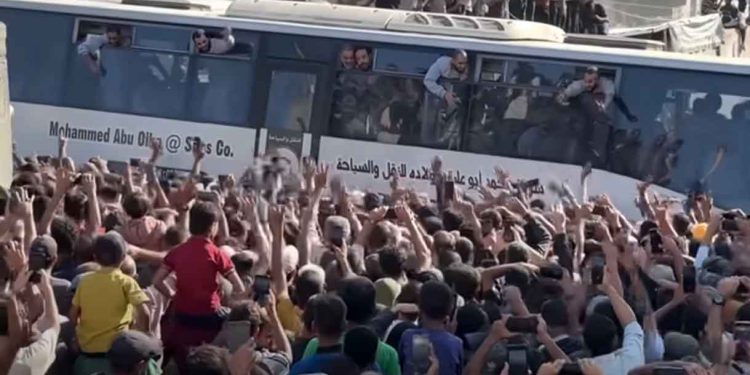At the gates of the Prisoners’ Reception Centre within Nasser Medical Complex in Khan Younis, tears mingled with joy as freed detainees embraced their families after more than eighteen months of imprisonment in Israeli jails.
Yet behind those weary faces lie harrowing testimonies of torture, starvation, and humiliation; accounts that expose the extent of violations accompanying the ongoing war on Gaza, described by UN bodies as a “slow-motion genocide.”
The prisoners were released on Monday as part of the first phase of a prisoner-exchange deal between Hamas and the Israeli occupation, coinciding with the ceasefire that came into effect last Friday. The deal follows two years of relentless war that has claimed over 67,000 Palestinian lives and wounded nearly 170,000 others, the majority of them women and children, according to Gaza’s Ministry of Health.
A Living Grave
Freed prisoner Abdel-Muizz Dahlan described his release in stark words: “Thank God… we’ve come out of a living grave.” His phrase summed up twenty-one months of torment marked, he said, by “starvation, repeated beatings, and systematic humiliation.”
Despite his frail frame, Dahlan spoke with quiet conviction to reporters, crediting his survival to “the steadfastness of our people,” while his young daughter clung to him in a moment that seemed to restore life’s meaning after a long absence.
According to the Commission for Prisoners’ Affairs and the Palestinian Prisoners’ Club, Israel released 1,968 detainees under the deal, including 250 serving life sentences and 1,718 from Gaza who were arrested after the war began. Many were transferred directly to hospitals due to the effects of torture and ill-treatment.
Systematic Torture and Bloody Testimonies
Freed detainee Ahmad al-Talabani from Jabalia, in northern Gaza, spoke to journalists while holding his son for the first time in over a year: “I cried every night because I had forgotten what my children looked like from the pain.”
Al-Talabani recounted how prisoners endured “mass beatings, tear gas inside cells, and deprivation of food and medicine.” Such practices, under the 1984 Convention Against Torture, constitute crimes that never expire and represent grave breaches of the Fourth Geneva Convention governing the protection of civilians in wartime.
Journalistic reports confirmed that visible signs of torture marked the bodies of many of those released, some carried on stretchers or in wheelchairs in a stark evidence of the inhumane and degrading treatment that flagrantly violates the fundamental rules of international humanitarian law.
A Systematic Genocide
What takes place in Israel’s prisons is inseparable from the broader policy of genocide against Gaza’s population. Under the 1948 Convention on the Prevention and Punishment of the Crime of Genocide, genocide is defined as acts committed with intent to destroy, in whole or in part, a national, ethnic, or racial group through killing or deliberate infliction of physical or psychological harm.
Field testimonies indicate that Gaza’s detainees were subjected to forced starvation, denial of medical care, and systematic torture; all unfolding alongside bombing, bulldozing, and mass displacement campaigns targeting civilians and infrastructure. Together, these elements reinforce the classification of the ongoing war as a state-backed genocide.
International humanitarian law, particularly Common Article 3 of the Geneva Conventions, obliges occupying powers to treat detainees humanely and prohibits torture, humiliation, threats to life, and deprivation of food or medicine.
However, reports from the UN Human Rights Office and the International Committee of the Red Cross over the past two years have confirmed widespread violations of these provisions. These findings call for an independent international investigation and legal accountability before the International Criminal Court, in accordance with the Rome Statute (1998).
